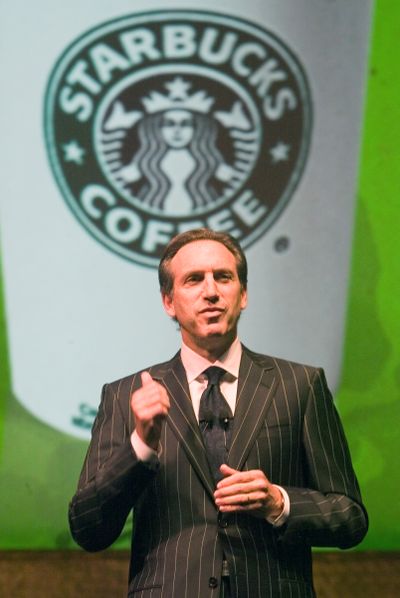New-media blitz targets Starbucks leadership
Internet video spreads message inexpensively

Starbucks a hub of union-busting and worker exploitation?
Say it ain’t so, Howard Schultz!
The Starbucks chief executive, who actively cultivates a socially progressive image, is in the cross hairs of a new-media campaign designed to bolster union representation at the retail giant and beyond.
For five years, Starbucks has been the target of a limited but sometimes nasty unionization drive that has tarnished its reputation for high-minded benevolence.
But last week, Brave New Films in Culver City, Calif., launched a “Stop Starbucks” offensive, including a StopStarbucks.com Web site featuring a four-minute video, also posted on YouTube, assailing Starbucks’ treatment of workers, along with a petition demanding that Schultz “quit following Wal-Mart’s anti-union example.”
By week’s end, almost 12,000 had signed the petition, and nearly 40,000 had viewed the video, organizers said.
The anti-Starbucks onslaught also featured a Twitter “hijacking” designed to undermine a Starbucks promotion in which contestants vied for prizes by submitting photos of themselves at Starbucks cafes. The virtual saboteurs forwarded the required “Twitpics” but hoisted signs blaring such seditious mottos as “I want a union with my latte” and “Schultz makes millions, workers make beans.”
The new-media assault, say Starbucks officials, presents a distorted portrait of management’s collaborative relationship with its “partners,” a reference to the company’s 135,000 U.S. workers.
“Calling Starbucks a bad employer simply doesn’t ring true with the overwhelming majority of our partners,” said Jim Koster, Starbucks senior vice president.
The anti-Starbucks blitz is indicative of how some unions and pro-labor activists have embraced new media. The Communications Workers of America, representing roughly 80,000 AT&T employees seeking a new contract, also has posted videos of its rallies on YouTube. It uses text messaging to keep its members informed.
“It’s a good way to spread the word and get people to participate and feel they’re part of something bigger as well,” said Peter O’Brien, organizer and executive board member of CWA Local 9510, based in Orange, Calif. “It goes viral pretty quickly.”
Most major unions boast extensive Web sites where workplace issues, political objectives and other concerns are thoroughly aired.
“New media is playing a central role in organizing workers in the service sector,” said Harley Shaiken, a labor expert at the University of California, Berkeley.
But employers also have well-developed Web presences and often work to refute what management views as misleading statements posted online.
“I don’t see the use of the Internet and social media as giving the unions a tremendous upper hand, though to some extent it does allow them to make initial contact with a wide variety of people,” said Nelson N. Lichtenstein, a professor at the University of California, Santa Barbara. “The companies also have the same abilities.”
Organizers say the Stop Starbucks campaign has resounded through social networks on the Internet. The video was prominently displayed on the popular BoingBoing blog, along with various others.
“What happens with these things is that people watch it, send the link to friends, and you can see it build,” said Robert Greenwald, head of Brave New Films. “It’s a tool that doesn’t cost billions of dollars.”